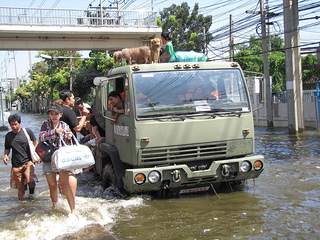 Business interruption and supply chain, natural catastrophes, and fire/explosion are the principal risks identified by global companies at the start of 2014, according to the third annual “Allianz Risk Barometer,” which surveyed over 400 corporate insurance experts from 33 countries.
Business interruption and supply chain, natural catastrophes, and fire/explosion are the principal risks identified by global companies at the start of 2014, according to the third annual “Allianz Risk Barometer,” which surveyed over 400 corporate insurance experts from 33 countries.
The survey by Allianz Global Corporate & Specialty SE (AGCS) highlights the increasing complexity of business risks, including a combination of new technological-, economic- and regulatory-related risks that potentially create a systemic threat for businesses.
As in last year’s “Risk Barometer,” business interruption and supply chain represent the top concern for businesses around the globe, including in Australia, Brazil, France, Germany, the UK, and the US.
Business interruption and supply chain losses account for around 50 percent to 70 percent of all insured property losses, as much as US$26 billion a year for the insurance industry based on 2013 data.
“As supply chains are becoming increasingly complex in a global sourcing world, any disruption—for example due to natural catastrophes, IT/telecom outages, transportation issues, a supplier’s bankruptcy or civil unrest—can lead to a snowball effect,” said Paul Carter, global head of risk consulting at AGCS.
Allianz suggests that companies respond to these growing challenges through stronger internal controls, combined with a holistic approach to risk management.
“Business continuity planning is key and should be part of any company’s procurement and supplier selection process,” added Carter. “Yet, to ensure appropriate mitigation measures can be implemented, it is no longer sufficient to know your ‘critical’ suppliers; you also need to have a grasp of how they manage their own supply chain exposures.”
The year 2014 will also be a critical year for companies when dealing with the threat of a number of emerging perils, explained Axel Thesis, CEO of Allianz Global: “Identifying the impact of interconnectivity between different risks is a top priority for risk managers.”
He said today’s business continuity plans must prepare for an increasing range of risk scenarios which need to reflect the sometimes hidden knock-on effects. “For example, a natural catastrophe can result in BI, IT-systems failure and power blackouts, among other perils.”
While BI remains the biggest threat for large corporates, mid-sized companies tend to be more concerned about fire and explosion, the impact of austerity measures, and credit availability.
In its 2014 “Risk Barometer,” Allianz noted that businesses are more concerned about cyber and reputational risks than ever before. Cyber is the biggest mover in this year’s barometer, climbing up to rank 8 from 15, while reputation moved up to 6 from 10.
Amid rising cyber crime, IT security is not enough. A comprehensive set of information and network security policies and procedures backed by the board of directors is essential. They also need to be properly implemented, tested and updated on a regular basis, said Allianz Global.
In the prolonged sluggish economic environment, companies also worry more about market stagnation/decline and, especially in growth markets, about talent shortages.
Loss of reputation or brand value is the biggest mover in the Top 10 risks in the Americas region (from rank 8 in 2013 to 4 in 2014), but concerns over talent shortages are also notable in this region, as they are in Asia-Pacific.
Following a longstanding trend in the Americas and Europe, Asia-Pacific is now also increasingly occupied with regulatory changes, for example as tougher legislation about rising environmental pollution is introduced.




